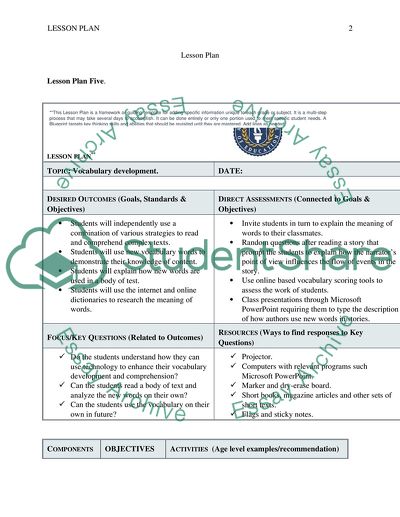Cite this document
(“Lesson Plan Topic: Vocabulary development Assignment”, n.d.)
Retrieved from https://studentshare.org/education/1700501-lesson-plan-topic-vocabulary-development
Retrieved from https://studentshare.org/education/1700501-lesson-plan-topic-vocabulary-development
(Lesson Plan Topic: Vocabulary Development Assignment)
https://studentshare.org/education/1700501-lesson-plan-topic-vocabulary-development.
https://studentshare.org/education/1700501-lesson-plan-topic-vocabulary-development.
“Lesson Plan Topic: Vocabulary Development Assignment”, n.d. https://studentshare.org/education/1700501-lesson-plan-topic-vocabulary-development.


